More details are emerging of Asiana Airlines Flight OZ214 from Seoul to San Francisco that crashed on Saturday.
The US National Transportation Safety Board (NTSB) have released new facts with the plane was flying a lot slower than the target approach speed 137knots on attempting to land at San Francisco Airport. In fact the plane was doing 106knots. An aural stall warning also sounded.
The pilot who was attempting the landing was new to the class and new to San Francisco, with only 43 hours logged on the Boeing 777. He had logged 9,793 hours on Boeing 737’s, 747’s and the Airbus A320.
Flight recorder data indicates that a crew member called for an increase in speed 7 seconds before impact, and a go-around was attempted 1.5 seconds before the airplane crashed on the runway.
Flight recorders from OZ214 – Picture – NTSB via Flickr
Upon hitting the sea wall, the tail of the plane separated from the plane as did the port side engine from the 777-200ER, as it made its way down to the runway. 307 passengers and crew were aboard, with two fatalities and 180 injuries. The fire started in the rear of the aircraft and spread quickly to burn the top of the fuselage of the aircraft.
The separated tail section – Picture – NTSB via Flickr
The NTSB also remarked there was no discussion of anomalies with any systems onboard the Boeing 777, with systems responding when the attempt to make the go-around was made.
The aircraft also damaged several of the precision approach path indicator (PAPI) lights that precede the runway. These are used to indicate if an approach to the runway way being made is too low. In addition, the glide-scope indicator had been deactivated on that runway as the airport begun a construction project on the runway.
The flight was on approach on Runway 28L with good visibility.
The NTSB has released pictures of the plane… and it isn’t pretty.
Exterior shots – note the broken bulkhead pressure seal in green – Picture – NTSB via Flickr
Interior of the Economy Section – Picture – NTSB via Flickr
San Francisco Airport is still experiencing delays and cancellations, with the following runways open:
- 1/19 Left – reopened on Saturday, 6th July
- 1/19 Right – reopened on Saturday, 6th July
- 28 Right – reopened on Sunday, 7th July
Runway 28 Left remains closed until further notice.
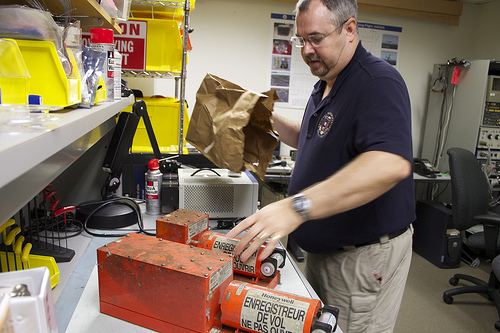
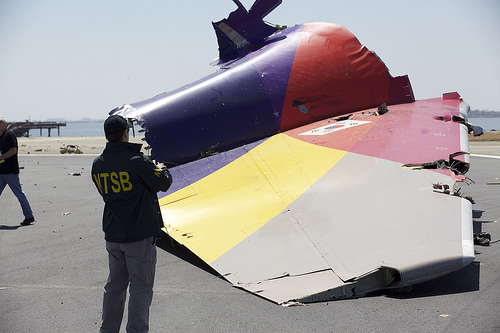
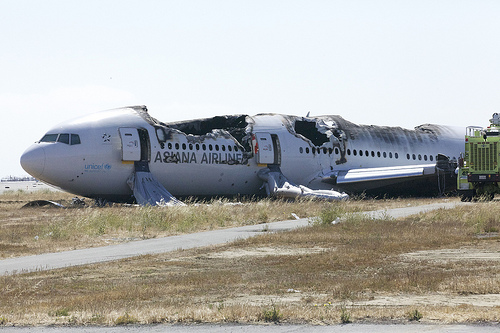
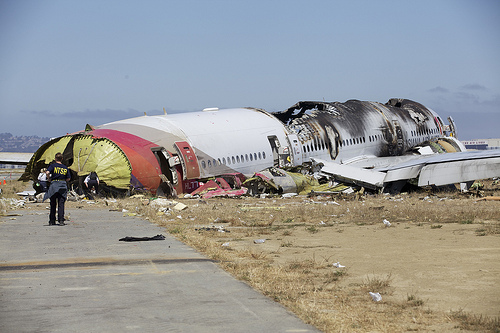
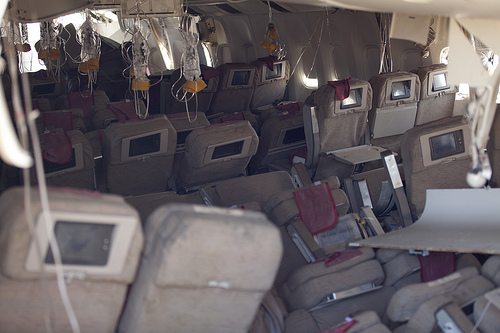
This seems to be a significant. No doubt it will show up as a contributing factor in the cause of the accident.
“In addition, the glide-scope indicator had been deactivated on that runway as the airport began a construction project on the runway.”
RE: deactivated glide slope indicator
NOT needed in a beautiful clear weather day. Even when cleared for an ILS or other precision approach, most pilots use that clearance to align with the runway (making it easier for ATC to manage aircraft relative placement) and fly the approach visually. The glide slope indicator is normally only used when there is limited visibility on the approach.